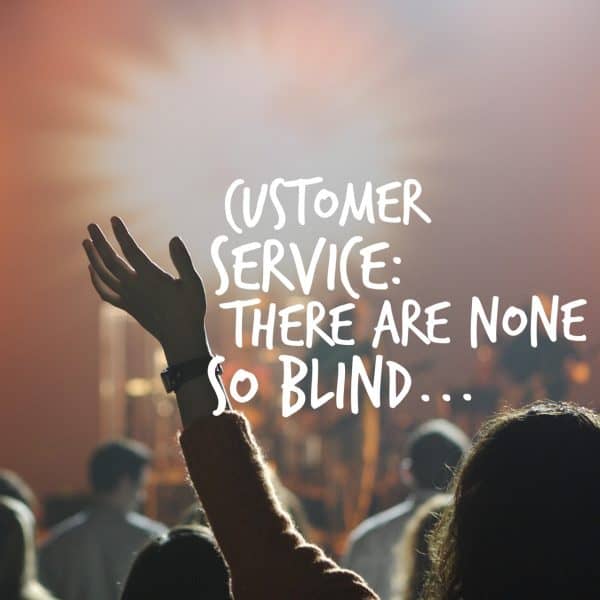I’m sitting in the second row of the big conference room listening to the keynote speaker at a corporate event. Every few minutes the speaker raises his hand and asks the audience if they’ve experienced whatever it is that he’s talking about.
“How many of us,” his hand goes up and he looks at us meaningfully, “work from home?”
“How many of us,” his hand goes up and he looks at us meaningfully, “send out our newsletter and then wonder why our phones don’t ring?”
“How many of us,” his hand goes up and again he looks at us meaningfully, “have that full ToDo list that we’re never going to get to?”
Trouble is, after asking us these questions, the speaker doesn’t wait for the voice of the customer. Instead, he just drops his arm and powers through his talk. Worse, he does this without ever acknowledging that any of us bothered to respond or that we deal with the very same issues he’s bringing up.
It didn’t take too many unacknowledged questions before our hands stopped going up so eagerly. Before long, the speaker’s hand was the only one that shot up when he asked a question.
Funny thing is the speaker never noticed. He just kept asking questions without waiting for answers.
As time passed, more and more of the audience were either sitting with their arms crossed or were staring down at their laps furiously typing away on their phones and tablets. Of course, the speaker probably thought we were taking notes and recording his words of wisdom. But I know that we were texting our friends, updating our Facebook feeds or checking out the score of last night’s game.
Every so often the speaker would stop lecturing on customer satisfaction, look up thoughtfully, and ask, “Is this helpful guys?” or “Does this make sense?” This time he would actually wait for the audience to answer before he continued with his monologue because this time the answer was about him. Of course, the people in the crowd who were still paying attention were too polite to answer honestly. Instead, they would croak out a weak but audible “yes” or just lamely nod in agreement.

The speaker took this acknowledgment as active encouragement to continue with his monologue.
Every so often someone would actually answer one of the questions and the speaker would acknowledge them. But instead of encouraging them and building on their answers, he would shake his head sadly and explain why they were wrong.
But it got worse. Because as the speaker corrected the person who answered, he rolled his eyes to demonstrate his contempt for them.
Throughout his talk, the speaker shared some great information from a number of best-selling business authors.
He asked us to “Find Your Why,” right out of Simon Sinek’s book of the same name.
He explained the concept behind “working ON your business, not IN your business,” straight from Michael Gerber’s E-Myth Revisited.
Over time the speaker referenced brand building ideas from Alan Weiss, Maria Forleo, and Randy Gage. He even threw in a quote from my last book, All About Them. Problem was, he didn’t give any of us attribution.
I’ve heard that “good artists copy but great artists steal” and that “If you steal from one author it’s plagiarism; if you steal from many it’s research.” I’ve also heard that “imitation is the sincerest form of flattery.” But c’mon, how about a little credit where credit is due?
By now you’ve probably figured out that all of this was anathema to someone who wrote a book titled, All About Them. But it can also serve as a good reminder of WHAT NOT TO DO when you’re looking to connect with your customers, your consumers, and your clients.
- Don’t ask questions and then forget to wait for the answers.
- Don’t belittle your audience.
- Don’t pass off someone else’s brilliance as your own. And,
- Don’t get so involved in your own performance that you don’t see what’s going on around you and fail to adjust accordingly.
In short, don’t forget that the most important part of building relationships is the “relate” part.
By the way, these pointers don’t only work when you’re up on stage. They’re also critical to building your relationships, building your business, and building your brand.

